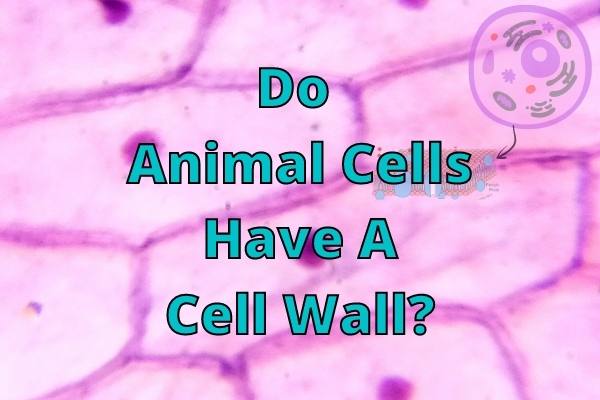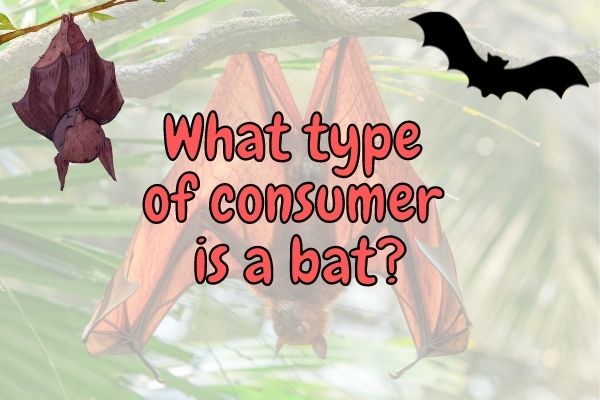In my teaching as a molecular biologist, this is a question I get asked surprisingly often! So I decided to write this article as a guide to my students and anyone else interested in the topic of animal cell anatomy and cell walls.
Other living organisms like plants and fungi also consist of cells, but there is one important difference between these cells and those of animals: the cell wall!
The cells of animals differ from other cells in that they do not have cell walls. Cell walls are only present in cells of plants, fungi and bacteria. Whereas the cells of fungi resemble animal cells the most, they do differ by the presence of the thick peptidoglycan cell wall that animal cells lack.
Animal cells are eukaryotic cells that are part of larger multicellular organisms like humans and animals.
In most cases, multicellular organisms are composed of many different cell types that work cooperatively.
Multicellularity has evolved independently in several lineages of eukaryotes, including plants, animals, and fungi.
But whereas plants, animals and fungi are all multicellular organisms, their grouping is defined by their cellular structure, which is partly defined by the presence of a cell wall!
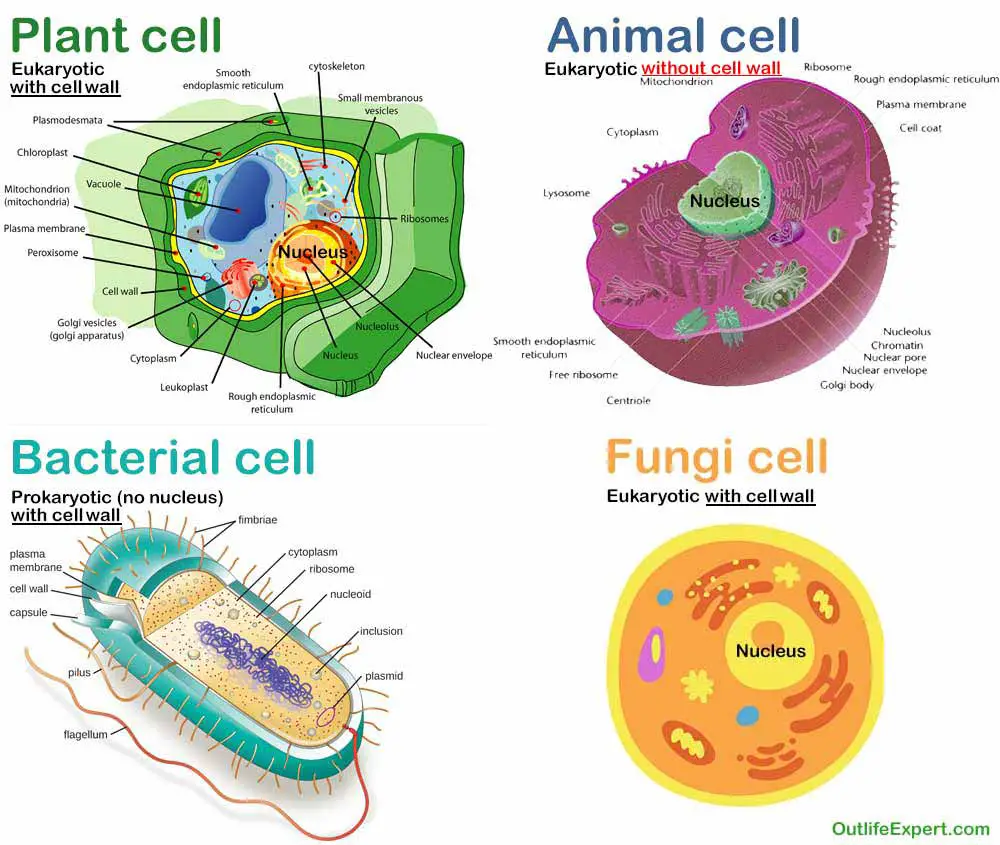
However, even within the kingdoms (bacteria, animals, fungi and plants) cells can be quite different from each other, and as you are likely aware of, cells also differ within each organism.
In some multicellular groups, such as seaweeds and slime molds, individual cells may be motile and able to move about independently; in other groups, such as brown algae and most land plants, cells are interconnected and immobile.
Contents
What is the function of a cell wall?
The cell wall is a waffle-like network that is formed from a variety of proteins and carbohydrates, which are linked together by peptide bonds, glycosyl linkages, and phosphate groups.
The composition of the cell wall differs between bacteria, plans and fungi, but is mainly made up off complex carbohydrates such as cellulose or lignin and different proteins.
It keeps the cell together in a rigid shape, protects it, and enables a high pressure to be maintained inside the cell without the cell rupturing!
The cell wall is also the first line of physical defense against pathogens and environmental disturbances such as wind, physical impacts and chemicals. It provides structural support for the plant, mushroom or bacterial cell and also serves as a barrier against water loss.
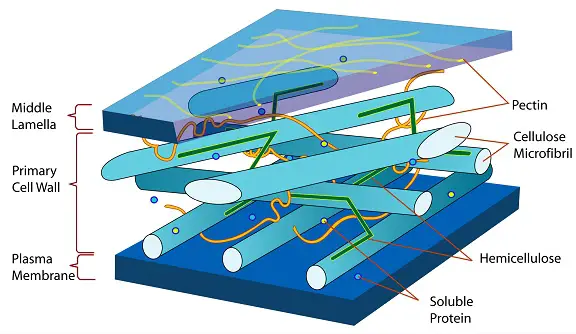
The cell wall also contains several enzymes and receptors that allow the cell to break down the food it takes into energy and receive signals from the outside.
Interestingly, the mitochondria that exists in all eukaryotic cells, believed to have once been bacteria, also do not have a cell wall although they likely used to have one! This most likely happened because the mitochondria lost their cell wall, just as many intracellular bacteria have, as they are no longer needed in the protective environment of the cell.
Why Do Animal Cells Not Have a Cell Wall?
Animals are multicellular organisms, and this lifestyle does require a certain “flexibility” of the involved cells.
The main reasons why animals do not have cell walls are because a cell wall would restrict the functionality and movement of the animal, make it harder for the cell to exchange nutrients and hormones, and because it would be a waste of energy and is harder to get rid off for the organism when a cell dies.
Let’s go through each of these reasons in a bit more detail!
Cell walls restrict movement and shape
First, plants and fungi are stiff structures that do not need a skeleton to stand straight! They can do so because their cells are “the skeleton” and the stiffness of their cells comes from the cell walls.
In other words, if we animals had cell walls, we would not really be able to move! Or at least we would move in the weird restricted manner of moving plants like the Venus Fly Trap!
Compared to other living organisms, animals have a high degree of cell differentiation that results in thousands of different cell types. The absence of a rigid cell wall allows us to build much more advanced bodies than those of plants and fungi.
Remember, that animals need to build cells like brain cells and bones from the same cellular starting point!
If all of these different cell types had to fit into the rigid shell of a cell wall, the differentiation process would have taken much longer to evolve (and you would probably still be an amoeba by now…!).
Cell walls restrict nutrient exchange and cellular communication
Being a complex multicellular organism also requires close communication, nutrient exchange and coordination between cells. Functions that are much harder to carry out with a thick cell wall surrounding the cell.
These tasks involve the coordinated exchange of different chemicals like sugars, amino acids, insulin and growth factors that all function to facilitate the growth of the cells and tell them when to do it!
It is not that the cells of plants and fungi cannot absorb nutrients, but having a thick cell wall around your cells do pose some limitations.
For example, our cells have numerous receptors on the outside that function as signal receivers. These receptors are large proteins embedded in the cell membrane where they float around.
If animals had a cell wall, these “antenna” such as hormone receptors, could not easily be placed on the cell surface where they are able to receive their signal. This is because a cell wall is much less fluid compared to a cell membrane and is therefore not easily able to contain large protein receptors on its surface.

And even though cell walls can contain certain receptors, it is harder for them to signal through the thick layer of carbohydrate (or fibers) that a cell wall is made of.
A protein “antenna” for signaling or a channel for nutrient uptake simply has to be much longer to reach across a cell wall in addition to the cell membranes that are present in all cells!
Cell walls are replaced by skin, shells and bones in animals
Because the main function of a cell wall is to create a protective and rigid barrier, you might wonder why animals do not need that.
Well, at some point in evolutionary history, animals evolved from an ancestor with a cell wall, but as animals grew into more complex multicellular organisms, they lost their cell wall in exchange for outer protection mechanisms instead!
Instead of the protective cell wall, animals evolved a thick layer of protective skin and a sturdy skeleton, which keeps the more vulnerable cells upright and resistant to outside impacts.
Other animals, like beetles, crabs and fish or lizards have evolved thick shells or scales to protect their softer cell wall-free cells.
This is a much more economical solution compared to each cell having their own protective layer, is this would require many more resources and energy.
Another important reason for cell walls being more expensive is that they are not easy to break down and reuse.
In animals, cells are continuously exchanged for new ones and some are killed by the immune system if they divide too fast or are infected by a virus.
As such, the body would need numerous extra metabolic systems and enzymes in place to support the continuous turnover of cells as breaking down cell walls is not a trivial task!
This problem can be illustrated by all the fibers you eat from plants that are basically cell walls that you cannot digest!
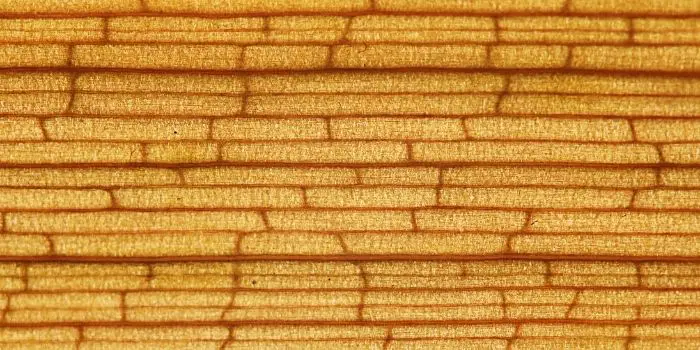
Why do plant cells have a cell wall but animal cells do not?
Plants have cell walls to support their upwards growth and protect them from outside damage. They need to grow as high as possible using as little energy as possible and therefore they often become thin and long – a shape that a skeleton would not be able to fit into and support!
Therefore, in contrast to animals, plants have thick cell walls that encapsulate their cells and enable a high pressure build up inside the cells that would not be possible without the cell wall!
Because of this pressure, plants can stand tall and erect even with very little biomass. This helps them reach towards the sun and get away from animals that want to eat them on the ground faster.
Animals do not need to grow as tall as trees, but they need to move freely, so they have no need to be as rigid as trees and other plants.
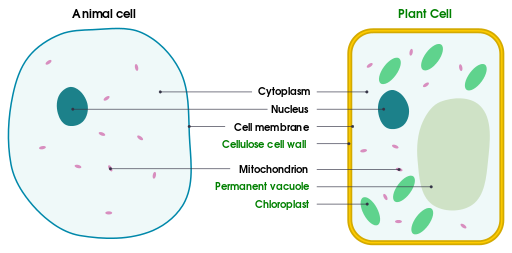
So, whereas animal and plants cells do share many cellular organelles like ribosomes, nucleus and plants also have mitochondria although plants can also do photosynthesis.
So in many ways, animals are simpler than plants at the cellular level!
But as stated above, if you do not need something, it is cheaper to just leave it out!
Do any animal cells have a cell wall?
No, animal cells are defined by their lack of cell wall. The closest you get to an “animal” with a cell wall would either be fungi (if multicellular) or yeast and some protists (if single celled).
Asking the question of whether a cell wall is present or not, is often enough to determine if an organisms is an animal or not!
However, sometimes the boundaries are quite blurry. The single celled protists belonging to the Euglena genus, for example, can generate energy using photosynthesis, but they do not have a cell wall.
Therefore Euglena are considered neither animals nor plants, but if they were to have a cell wall they would immediately be classified as single celled plants or algae.
Do animal cells have cell membranes then?
Yes! All animal cells do have cell membranes.
In fact, all organisms have cell membranes although they might differ in their composition.
Cell membranes differ between organisms and from cell to cell type.
The cell membrane of a plant have a different composition than that of an animal, and those organisms that tend to live in lower temperatures (and do not regulate their own temperature) tend to have more fluid cell membranes that those that live in hotter climates.
But also within the organism, cell membranes will differ in their fat and protein compositions.
For example, the cell membrane of a neuron has a different protein composition than the cell membrane of the muscle cell.
The cell membrane of the red blood cell has a different protein composition than the cell membrane of the platelet.
The cell membrane of the macrophage has a different protein composition than the cell membrane of the cell of the epidermal cell.
The cell membrane of the cell of the epidermal cell has a different protein composition than the cell membrane of the epithelial cell.
Why do animals have a cell membrane but no cell wall?
The cell membrane is a minimum requirement for a cell to function as an individual unit. It keeps the cellular environment stable and all the organelles in place.
The cell membrane of animal cells also serves to host protein channels and receptors that can take up nutrients and receive signals from other cells!
Without a cell membrane there would be no cell! But a cell wall as more of an extra layer of protection and rigidity that is not strictly vital for life.
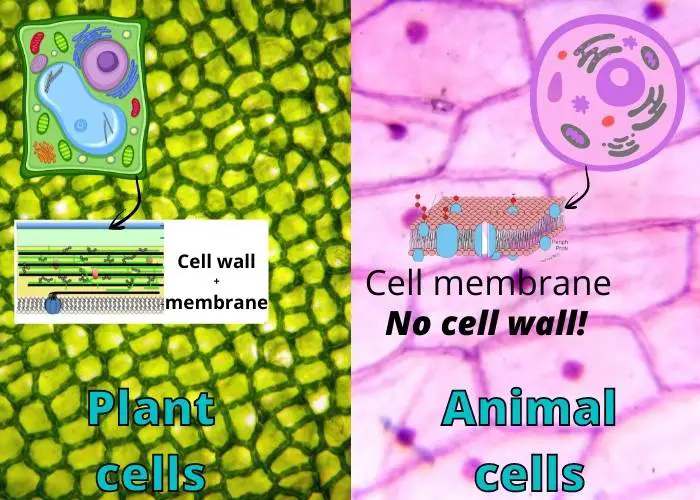
You may view the cell membrane as a layer of skin and a cell wall as an armor or thick space suit.
Whereas the cell wall cannot in itself keep the cell watertight as the cell membrane can, a cell wall can withstand much higher pressure than the soft cell membrane alone.
This is why organisms like mushrooms and plants are hard and rigid compared to most animals!
Which kingdoms do not have a cell wall?
The kingdoms of life that include members without cell walls are animals, protozoa and bacteria.
For example some bacteria like the Rickettsia or Mycobacterium species (such as the causative agents of leprosy and tuberculosis) do not have cell walls in the classical sense.
Instead, these bacteria have a thick waxy membrane that is hard enough to function partially as a cell wall even though it is fundamentally different from the cell wall of most other bacteria, plants and fungi!
As we will see below, some protozoa also do not have a cell wall, but they do have a thick protein coating of their membrane which acts a bit like a cell wall!
What organisms do have cell walls?
As a general rule, all plants, fungi and most bacteria and archaea have cell walls.
There are exceptions, however, for example the Mycobacterium species (such as the causative agents of leprosy and tuberculosis) do not have cell walls in the classical sense.
FAQs
I have collected some of the questions I most often receive from my students and some short answers to these below.
Do cheek cells have a cell wall?
No, cheek cells are human, and therefore animal, cells and animal cells do not have cell walls.
This is in a way practical, as your cheeks would not be very flexible if their cells had cell walls!
It also makes it much easier to extract DNA from them as is exploited in many self-test DNA kits where a saliva sample is required.
Here most DNA comes from the cheek cells and the DNA is extracted in a way that makes sure the cheek cells are ruptured before most bacteria, that are protected by a cell wall, would be.
Do blood cells have a cell wall?
Blood cells like red blood cells, or erythrocytes, are as much animal cells as the rest of your body so they do not have cell walls!
They are, however, quite unique cells because they do not have a nucleus nor do red blood cells have mitochondria (and can therefore not use oxygen directly for energy!).
Do white blood cells have a cell wall?
White blood cells are more like most other cells in the body and they do not have a cell wall! Many white blood cells, like the dendritic cells, have odd shapes that would not be possible with a cell wall!
Macrophages, that also lack a cell wall, would not be able to engulf intruding bacteria or viruses if their cells were stiffened by a cell wall.
Therefore, white blood cells do not have cell walls.
Do paramecium have a cell wall?
No, they have a pellicle as other ciliate protozoa. I will not go further into the topic here as I have written a whole post on paramecium and their pellicles.
Do insects have a cell wall?
No, insects have an external chitin skeleton that protects their cells so they do not need a cell wall to do so.
Do elodea cells have a cell wall?
Yes! Elodea are water plants so they do have cell walls.
Elodea is a genus of aquatic plant known for its ability to absorb high levels of nitrogen and phosphorus from water, making it an ideal candidate for use in water purification systems. Elodea can also help to control algae growth by providing shade and competing for nutrients.
Do onion cells have a cell wall?
Yes, onions are plants and all plants have cell walls!
Do radiolarians have a cell wall?
Radiolaria are a group of aquatic protozoa that produce intricate mineral skeletons instead of a cell wall. Because their hard mineral layers keep the cells protected and rigid, they do not need the rigidity of a cell wall.
Radiolarians are found in all oceans, from the surface to the deep sea, and because of their inorganic capsule skeleton, their fossils are preserved in sediments ranging in age from Precambrian to Recent time!
Do algal cells have a cell wall
Many algae are single celled organisms, but others have a multi-cellular structure.
While some single celled species of algae do not have cell walls, others do although their composition and structure differ strongly from that of plants.
So most algae, especially macro algae like seaweed, have cells that look like those of plants and therefore they do have cell walls.
However, the first algae species to evolve were just photosynthetic protozoa, like the euglena species, that had just acquired the ability to make photosynthesis.
And protists such as Euglena are also categorized as algae, although these do not have cell walls!
However, other single celled algae like Volvocales do have real cell walls.
Do red algae have a cell wall?
Yes, red algae are multicellular algae and all multicellular algae have cell walls. Red algae in particular actually have a double cell wall structure that makes it extra robust!
Do viruses have a cell wall?
Viruses do not have a cell wall because they are not cells! They do, however, have a rigid envelope structure, but it depends on their host!
Most animal viruses just have an envelope similar to the cell membrane of the host cell they infect, whereas some bacterial viruses, called bacteriophages, always have a rigid cell-wall like, but thinner, protein envelope.
Do archaebacteria have a cell wall?
No, whereas most archaebacteria do have cell walls, there are examples of species without cell walls!
Most archaebacteria have a cell wall composed of a unique substance called pseudomurein. This substance is made up of long chains of alternating sugar and phosphate molecules, which are bonded together by cross-links. The cell wall provides strength and rigidity to the cell, and helps to protect it from osmotic pressure.
However, one exception is some of the species of Ferroplasma and Thermoplasma.
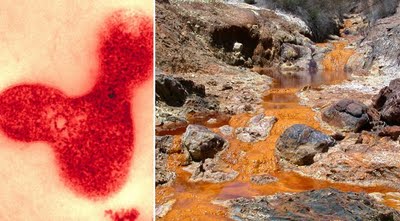
Ferroplasma and Thermoplasma are groups of thermophilic, acidophilic archaea meaning that they live in hot acid! Their cells are ovoid to spherical, and are 0.5-1.0 μm in diameter.
Do to the lack of a cell wall their cells look a bit blobby like some protozoa and they are motile, and have a single polar flagellum.
Some of thse species are obligate ferrous iron oxidizers, and can grow at pH values as low as 0.5!
It is not yet known how these archaea survive these extreme conditions without a cell wall, but their membranes are more though than those of other bacteria and archaebacteria.

